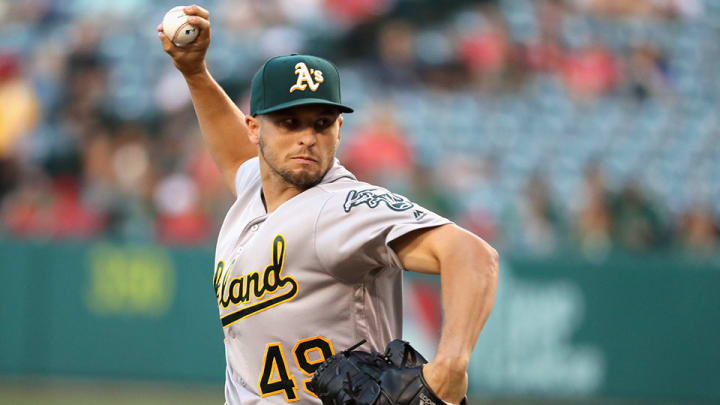Oakland A’s host Little Leaguers to promote STEM education

Read about the latest sports tech news, innovations, ideas and products that impact players, fans and the sports industry at SportTechie.com.
The Oakland Athletics are perhaps most well known for their forward-thinking analytical approach to baseball, popularized in the movie Moneyball, which was based on a book with the same title by Michael Lewis. But the A’s should also be recognized for their work to make a positive impact off the field in the Bay Area.
On Thursday, the A’s and Chevron hosted more than 100 Richmond little leaguers, for the second year in a row, for an on-field clinic that hopes to inspire science, technology, engineering and math (STEM) learning through the science of sports. The coaches included A’s coach Ron Washington, former A’s players Shooty Babitt, John Odom, and Bip Roberts, and others. A’s pitcher Kendall Graveman, who studied mechanical engineering at Mississippi State and is a STEM supporter, was also on hand to meet clinic participants and sign autographs.

Subscribe to the
SportTechie Newsletter
Subscribe

- Media Mailbag: How long will Al Michaels work?
- Jordan Spieth tracking fitness with smart shoes
- Royals find new partner for performance-tracking
The A’s and Chevron have hosted a few STEM-related programs throughout the season to help deepen the interest and understanding among Bay Area youth by applying science to baseball. Chevron has made an effort to be committed to increasing access to quality education and started the $35 million scholarship program called The Richmond Promise.
The main goal of the Chevron STEM program is to show children the scientific roots of sports. Explaining these connections can help encourage children to explore scientific interests and education
“There has been an explosion in the use of technology during the years I’ve been managing. It started with video, and making tapes of games,” Tony LaRussa, now of the Arizona Diamondbacks, told us last year. “Now, players and coaches can analyze what happens on the field in total detail. Most of the attention now is on the technology of metrics and using computers to calculate probabilities and efficiencies.”
As STEM and sports continue to collide and provide children the outlet to learn complex ideas through sports they love, professional and collegiate sports entities can continue to make an impact in their communities.
